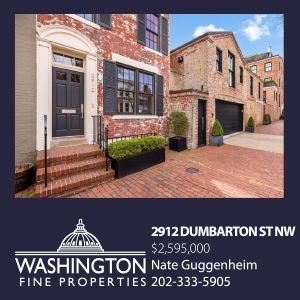A Conversation With Chris Addison
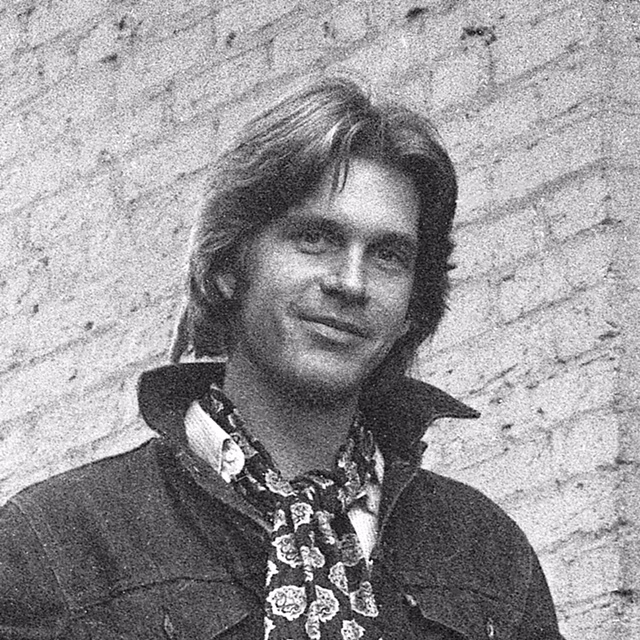
What better way to celebrate the new year than to have a chat with Chris Addison, native Georgetowner and founder of one of the area’s foremost contemporary galleries, Addison/Ripley Fine Art. I’ve known Chris for over a dozen years, and one of my fondest memories is his introducing me to the amazing jazz pianist ELEW, a wonderful example of how Chris enthusiastically supports artists in every genre.
He graciously shares some childhood memories of growing up in the neighborhood, and his life-long commitment to promoting emerging, local, national and internationally recognized artists.
The gallery at Wisconsin and Reservoir is an iconic Georgetown landmark.
Thank you, Chris!
DISH: Can you tell us how your interest in art started.
CA: My earliest interests came from two very distinct sources. Sundays at The Phillips Collection, specifically, the Rothko Room and from the house on the corner of 30th and P Streets where we i.e. the children in my neighborhood, gathered. This house belonged to the Noland's and the children's father’s art was prominently displayed there. I went on to study and practice art in college and to work as an exhibition designer for the Smithsonian.

DISH: Where was the first DC gallery space you bought with your wife?
CA: We first rented and then purchased an old carriage house in Hillyer Court, the alley behind The Phillips Collection. Two stories, 6,000 square feet and very rough, we lived on the second floor of this building when we were first married but built out the first floor for gallery space initially. The owner had intended to open it as a gallery but had lost interest. The only thing he had put in was a suspended lighting track system designed by then National Collection of Fine Arts curator, Walter Hopps. The floors were rough concrete with wash down drains in the center of each room. Two of the original stall dividers were still in place and a wall had been built around the manual water pump. There was no heat or air conditioning on the second floor which was covered with cheap plywood rescued windows and doors tacitly kept out the elements. In the winter, I stoked the pot bellied stove with wood scraps, lit it, closed the cover and pulled my bed up to the grate to stay warm. In the really cold weather, the water in the toilets froze and we had to keep the water turned on to prevent the pipes from freezing.
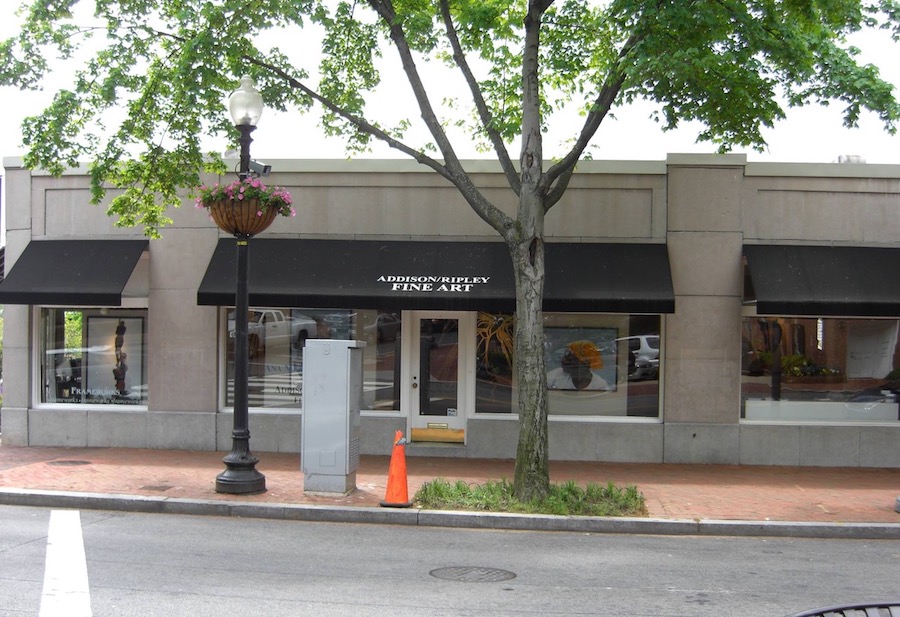
DISH: How did you come to choose the corner of Wisconsin and Reservoir Road for Addison/Ripley Fine Art?
CA: This building had been a bit of an enigma to me as a young person, with gloomy grey drapes covering the windows and dusty Asian antique furniture inside, it seemed mysterious and enticing, although I had never been in. When the owner of Frameworks, Jay Houston, called me and invited us to consider renting half of the building with him, my father had died and my mother still lived in the house we had grown up in, only several blocks away. It seemed like both a good opportunity to test the idea of having two locations and to be able to spend more time with my mother. The idea then and now was that we could develop an outward facing art gallery that passersby could enjoy even when the gallery was closed. Ironically, one of the first exhibitions we mounted in this space was a collection of Tibetan antiques my wife and I had collected in Asia.
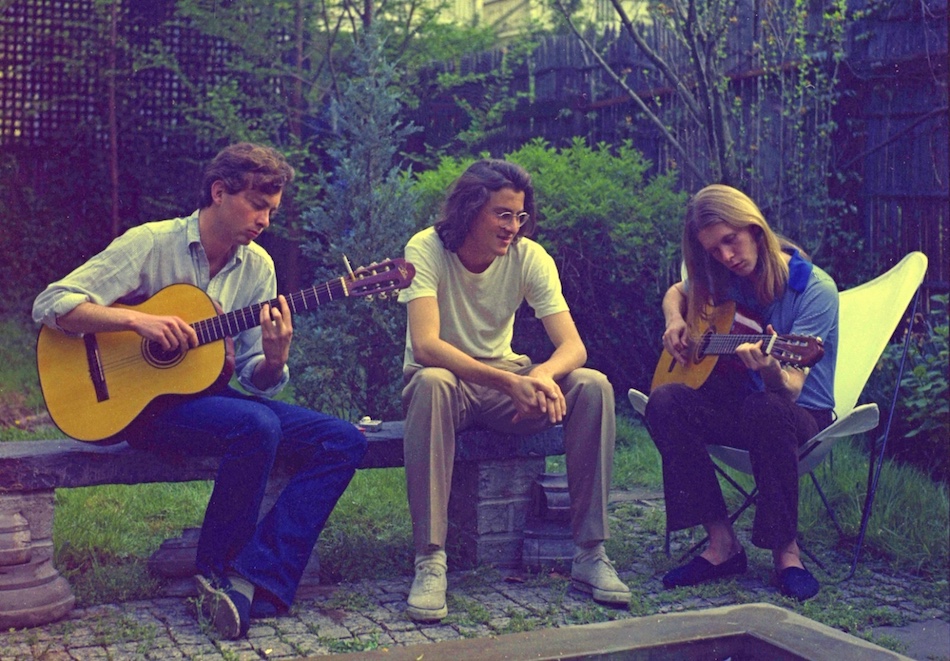
DISH: Share some recollections of growing up in 1960s Georgetown. (where you played, the music scene, your first job, etc).
What Georgetown establishment or business do you miss most?
CA: Loved being in Georgetown growing up. The parks, Rose and Montrose, the cemetery for which we had a key to visit after hours, the abandoned warehouses by the river under the Whitehurst, Dumbarton Oaks whose pool was fair game after dark and a quick scramble over the walls, Jelleff where we played multinational soccer, the volley ball court, such as it was, by the decaying swings and jungle gym in Montrose, the wide alley in West Lane Keys off of P Street, these and more were our playgrounds.
A rite of passage for my friends and I was working for the Scheele Brothers, Fred and George, in their small grocery store on Saturdays. I pulled groceries for many Georgetown residents and rode in the van with Billy or Sonny to deliver them, becoming much more familiar with the kitchen door than the front one. I rarely left without being offered a fresh baked cookie or piece of cake.
The T of Wisconsin Avenue and M Street sidewalks and shops was delightfully different than the more staid houses and gardens on the side streets. A wide variety of music was on offer from folk at the Cellar Door to jazz at One Step Down, local rock bands at the Corral and Crazy Horse. Eventually we were able to sample the even broader spectrum that came after, clubs like Emergency and Pisces, outdoor scenes like P Street Beach and Dupont Circle. As youngsters we plotted ways to be in the clubs underaged and as we became older, we frequented all of them and worked at some.
The Biography offered us cinematic culture, The Phillips Collection visual pleasures along with the occasional Sunday concert in their Music Room.
A couple of times we rented and transformed the Georgetown Boathouse into all night dance parties, inviting 100 people and ending up hosting many many more. We roamed the streets safely and freely, gathering in places like the old Peoples Drug Store for an exotic cherry coke or at one of the “head” shops or the comic book rack at Morgan’s Pharmacy. As a teenager I would sneak out of my own house, walk down and wake one of my friends who would climb down the trellis from his bedroom for a 5 a.m. coffee at the counter at Peoples, thinking were so daring.
Our friends were from wildly different international backgrounds and the ages varied from 10 to 20 something. The older kids looked after the younger ones. Spanish, French and English were spoken along with other languages and one of my fondest memories is of playing soccer at Jelleff with several conversations going at once in several languages.

DISH: In your role as art consultant, what’s the most important piece of advice you give your clients?
CA: For buyers, make sure that you buy what you love and buy the very best you can afford even if it’s a stretch and even if you have to wait. For sellers, it’s like selling house in the sense that you have to attach the right value; too low and the implication might be you are trying to just get it sold, too high and you probably have to keep bringing the price down, ultimately devaluing it.

DISH: Who are some favorite artists you’ve represented?
CA: Such a long list! Here are some. Wolf Kahn has easily been the one who has the best overall name recognition. Patricia Tobacco Forrester, Graham Caldwell, an up and coming glass artist at the time, Lou Stovall and Frank Hallam Day. Jackie Battenfield and Carol Brown Goldberg for overall professionalism and fine products. Both John Dreyfuss and Martin Kotler, both of whom we no longer represent, I am really proud to have collaborated with them. All of the quilters from Gees Bend. Tom Meyer and John Borden Evans for their direct, quirky and unassuming world views. The arresting work, often with gold leaf, of environmentally dedicated artist, Kay Jackson. In fact, all of the artist we represent, many for decades now.

DISH: What advice do you have for someone starting an art collection?
CA: Look hard, look a lot, so you can begin to trust your own eye and taste. Taste being something that develops over time and with experience, it is important to take note of what you see that you like, in museums, private galleries, not for profit art spaces, your friend’s home and in the auction catalogues. Some of the most dedicated collectors I know carry notebooks and record their impressions. There are no wrong choices as far as your individual taste is concerned but there are plenty of factors to consider when choosing, plenty of ways to get distracted or sidetracked. We advise many clients but we always take the time to learn what it is they are looking for first.
DISH: What are the challenges of choosing art for public spaces?
CA: The first challenge would be clearly defining the parameters: placement, audience, purpose and costs. Public art can often seem unrelated to or at odds with its local audience. Poor placement negates both the aesthetics of the artwork and the ability of that artwork to complement its setting. Too small a budget might constrain the scale or the ability of the work to be made from the highest quality materials. Finally, public art, more perhaps than any other sort, needs to be intelligible. Signage, public events with the artist (and architect if there was that sort of collaboration), and announcement of the timetable and the process will always pay off in terms of how public art is perceived.

DISH: How do you see the art scene evolving over the next few years?
CA: While we have always taken the position that art needs to be seen in person, the recent pandemic has shown even more clearly, that online purchases are here to stay. Online fairs, online auctions and collections presented on platforms such as Instagram are just a few of the ways collectors are finding and purchasing art works.
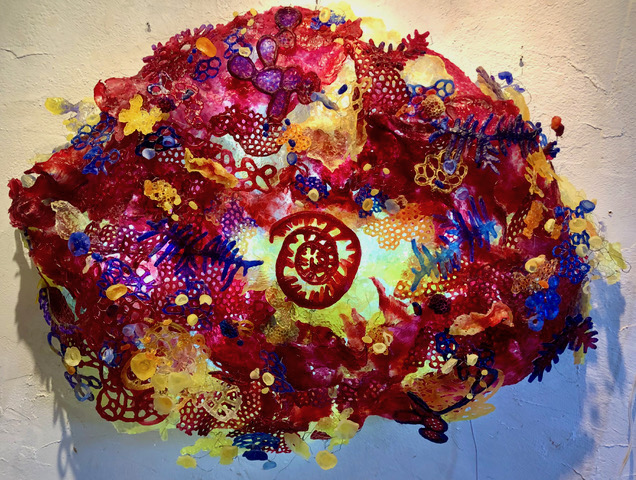
DISH: Who is the next emerging artist you’re excited about exhibiting?
CA: She is not emerging, rather re-emerging. Which seems rather appropriate given the current situation. Yuriko Yamaguchi had previously shown extensively here, nationally and internationally. Her works is on permanent display in Dulles Airport and in several area museums. However, her new body of work explodes into space, transparent and translucent pieces wired together in a complex web, lit from behind. At once delicate and impossibly complex, Yamaguchi’s work hangs jewel like on the wall or suspended in space . Her exhibition in the gallery will open in the Fall of 2021.


